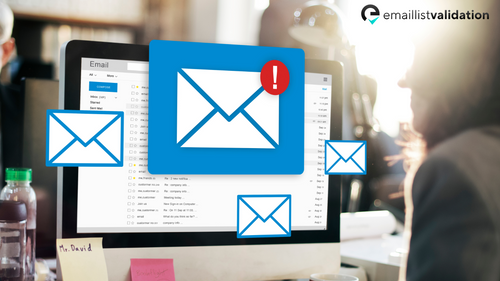Email is one of the most important communication tools in today's business world. It is fast, efficient, and can be accessed from anywhere. However, it is also easy to make mistakes when sending emails, which can damage your professional reputation and cause misunderstandings. In this article, we'll discuss the most common email mistakes and how to avoid them.
1. Typos and Grammatical Errors

One of the most common email mistakes is sending an email with typos or grammatical errors. This can make you appear unprofessional and careless. Always proofread your emails before sending them, and use spell check software if necessary. If you're not sure about a word or phrase, look it up to make sure it is correct.
2. Not Including a Clear Subject Line
A clear subject line is essential for getting your email opened and read. It should accurately reflect the content of the email and be concise. Avoid using vague or misleading subject lines, as this can cause confusion and make it harder for the recipient to find your email later.
3. Writing an Email That is Too Long
No one likes receiving a long, rambling email that is hard to read and understand. Keep your emails short and to the point, and use bullet points or numbered lists to make them easier to digest. If you need to include a lot of information, consider attaching a document or providing a link to a website.
4. Using Poor Formatting
Good formatting can make your emails easier to read and understand. Use headings, subheadings, and paragraphs to break up your email into sections. Use bold or italic text to emphasize key points, but avoid using too much formatting, as this can make your email look cluttered.
5. Sending Emails to the Wrong Person
Sending an email to the wrong person can be embarrassing and potentially damaging to your professional reputation. Always double-check the recipient's email address before hitting send, and use the blind carbon copy (Bcc) field when sending emails to multiple recipients to avoid accidentally including the wrong person.
6. Forgetting to Attach Files

Forgetting to attach a file is a common email mistake that can be frustrating for both you and the recipient. Before sending an email with an attachment, double-check that you've attached the correct file and that it is in the right format. You can also mention the attachment in the body of your email to make sure the recipient knows it is there.
7. Not Responding in a Timely Manner
Not responding to emails in a timely manner can make you appear unprofessional and unresponsive. Try to respond to emails within 24 hours, even if it's just to acknowledge receipt, and let the sender know when you'll be able to provide a more detailed response.
8. Using Inappropriate Language or Tone
Using inappropriate language or tone in an email can be offensive and damaging to your professional reputation. Always use a professional tone and avoid using slang, abbreviations, or emoticons. If you're angry or upset, wait until you've calmed down before responding to an email.
9. Sending Emails at the Wrong Time
Sending an email at the wrong time can be annoying for the recipient and can make you appear unprofessional. Avoid sending emails late at night or early in the morning, as this can be disruptive. Also, be mindful of the recipient's time zone if they're in a different location.
10. Not Following Up on Emails
Not following up on emails can be frustrating for the recipient and can cause misunderstandings. If you've sent an email and haven't received a response within a reasonable amount of time, follow up with a friendly reminder. This shows that you're proactive and professional.
Conclusion
By avoiding these common email mistakes, you can improve your professional reputation and communicate more effectively with your colleagues and clients. Remember to proofread your emails, use clear subject lines, keep your emails short and to the point, use good formatting, double-check the recipient's email address, attach files correctly, respond in a timely manner, use a professional tone, send emails at the right time, and follow up on emails when necessary.
Frequently Asked Questions
What are some other common email mistakes?
Other common email mistakes include using an unprofessional email address, sending emails when you're emotional, forwarding emails without permission, and using a generic email signature.
How can I improve my email communication skills?
You can improve your email communication skills by taking an online course or reading books on the subject. Practice writing effective emails, and ask for feedback from colleagues or mentors.
What should I do if I've made a mistake in an email?
If you've made a mistake in an email, apologize immediately and try to rectify the situation as soon as possible. Be honest and transparent, and offer a solution if possible.
Is it better to send emails or make phone calls?
It depends on the situation. Emails are better for conveying detailed information, while phone calls are better for discussing complex issues or resolving conflicts. Use your judgment and consider the preferences of the recipient.
', 'status':'published','meta_title':'Common Email Mistakes: How to Avoid Them','meta_description':'Avoid common email mistakes to improve your professional reputation and communicate more effectively. Learn how to proofread your emails, use clear subject lines, keep your emails short and to the point, use good formatting, and more.'}]}}"



